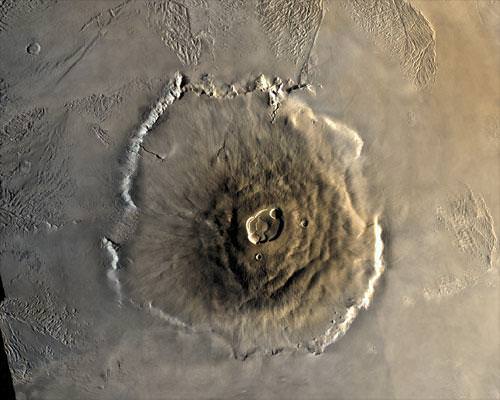[/caption]
Shield volcanoes are large volcanoes with gently sloping sides. In fact, the largest volcanoes on Earth (and even the Solar System) are shield volcanoes. They form when lava flows of low viscosity build up over long periods of time, creating volcanoes with huge internal volume. The best known shield volcanoes are ones that make up the Big Island of Hawaii: Mauna Loa and Mauna Kea.
The common feature with shield volcanoes is that they’re built up slowly over time from a very stable central summit vent. Flow after flow pours out of the vent, slides down the slopes of the volcano, and builds up the size. The largest volcanoes, like Mauna Loa and Mauna Kea would have been created from thousands of these flows.
Shield volcanoes can be found around the world. In northern California and Oregon, they can be 5-10 km across and about 500 meters high. But in the Hawaiian Islands, the volcanoes were atop very active vents for millions of years. Mauna Loa projects 4,168 meters above sea level, but if you measure it from the base of the ocean to its top, it measures 8,534 meters. (Mount Everest is 8,848 meters tall).
Volcanic activity is linked to plate tectonics, and the most of the world’s volcanoes are located near plate boundaries where subduction is happening. This is where one plate is passing under another plate, sinking into the Earth’s mantle.
The largest shield volcano in the Solar System is Olympus Mons on Mars. This monster measures 27 km above the surface of Mars, and is 550 km in width. It’s believed that Olympus Mons got so big because Mars lacks plate tectonics. A single volcanic hotspot was able to channel lava for billions of years, building up the volcano to such a great size.
We have written many articles about the Earth for Universe Today. Here’s an article about Olympus Mons, and here’s an article about Mauna Kea and Mauna Loa.
Want more resources on the Earth? Here’s a link to NASA’s Human Spaceflight page, and here’s NASA’s Visible Earth.
We have also recorded an episode of Astronomy Cast about Earth, as part of our tour through the Solar System – Episode 51: Earth.

